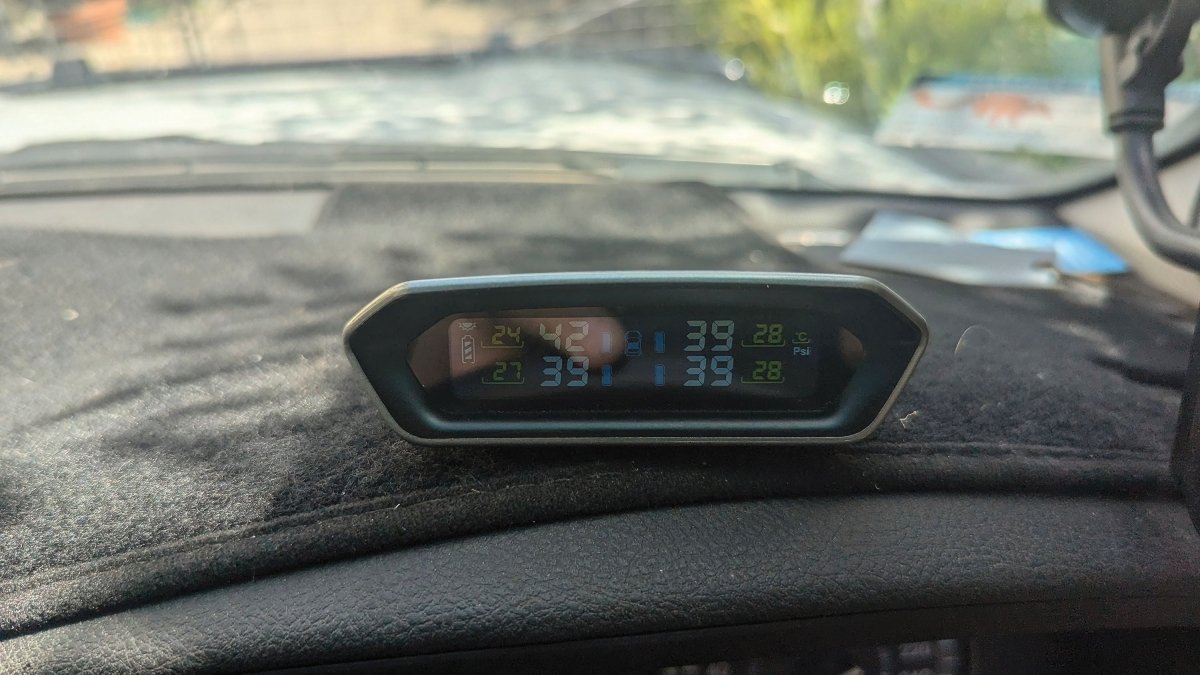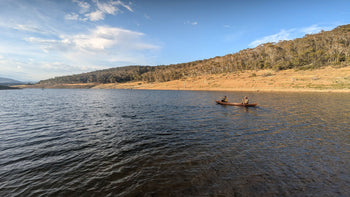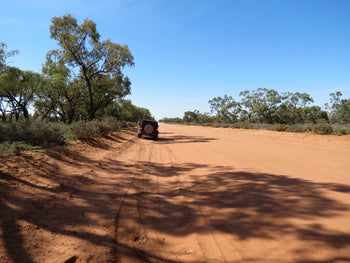

Touring off the beaten track in Australia presents many challenging terrains, and the benefits of a tyre pressure monitoring system should never be underestimated.
Never underestimate the importance of having the correct tyre pressures for the terrain you’re travelling on — and being able to monitor them. On outback roads, in remote areas and when towing a heavy load, ensuring your tyres have the right amount of air in them is vital to a safe trip. Plus, it makes handling of the vehicle much easier, reduces the risk of tyre failure and improves the fuel economy of a vehicle.
Regardless of whether you’re four-wheel driving, towing a modest camper trailer or the most advanced 4T caravan, a reliable tyre pressure monitoring system is one accessory you shouldn’t skimp on. And it’s one we can’t live without. This is especially true on long journeys on outback roads, when a flat tyre can have drastic consequences. Trust me, you don’t want to be stuck out there.
It doesn’t take much to see a tyre start to deflate. Most of the flat tyres I’ve had come from screws embedding themselves in the tyre, and even new ones with deep tread can pick up something sharp and small. A leak can be slow, but inevitably, if unattended, the tyre will deflate to the stage where it can start to fall apart or blow out. Such a situation can be dangerous, but it is also time consuming and physically demanding to fix and expensive to replace. We want to avoid this at all costs.

A tyre pressure monitor gives real-time information on pressure and temperature as you drive. We tried the Oricom TPS10 system on our 25,000km tour to Western Australia , and it prewarned me of trouble twice with two screws puncturing the tyres and reducing pressures overnight, which we were able to fix quickly.
The tyre pressure monitors from Oricom work by creating a wi-fi network between a solar-powered receiver with a screen and screw-on sensors on the tyre. The TPS10 can report on up to 10 tyres by scrolling through the display four at a time — so, if you’re towing, four are for the tow vehicle, four are for the caravan wheels and there are two for any spares.
The setup of the Toyota’s tyres was straightforward and quick. The van tyres took some time, but eventually, we were set. Because monitoring is done in sequence with the car, van and then the spares showing on the screen, I deleted the spare tyres as I found them unnecessary.
You can set the system display to either metric or imperial across pressure and temperature. Being old school, I chose psi (pounds per square inch) but Celsius over Fahrenheit, of course.
One issue I thought may present itself was from the senders, which looked like they might be vulnerable to flying stones or passing shrubbery … but all was fine, and I had no issues over many rough, desert kilometres.
High and low pressure and temperature are set, and there’s an audible alarm for recordings that are out of the chosen range. Watching the pressure and temperature rise as we got up to speed was interesting. An old adage says the tyre’s operating temperature shouldn’t be more than 4psi higher than the cold reading. Otherwise, you should add pressure. So, I kept an eye on that over our travels.
The only thing I didn’t like about the system was that I couldn’t see the solar-powered LCD display unit with polarised sunglasses. I would sneak a peek occasionally to check, but the audible alarm is there as a backup.

The Oricom TPS10 Tyre Pressure System with six sensors costs $299 and extra monitors are $99 a pair. If you’re towing a large caravan on your road trip, you will probably need the $99 Signal Repeater . It’s a worthwhile investment and will pay for itself the first time it saves buying a new tyre.
To shop for Oricom products and all your other touring gear needs, check out the A247 online store here.
Related articles
UHF Buyer’s Guide — which is best for your needs?



